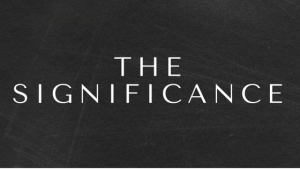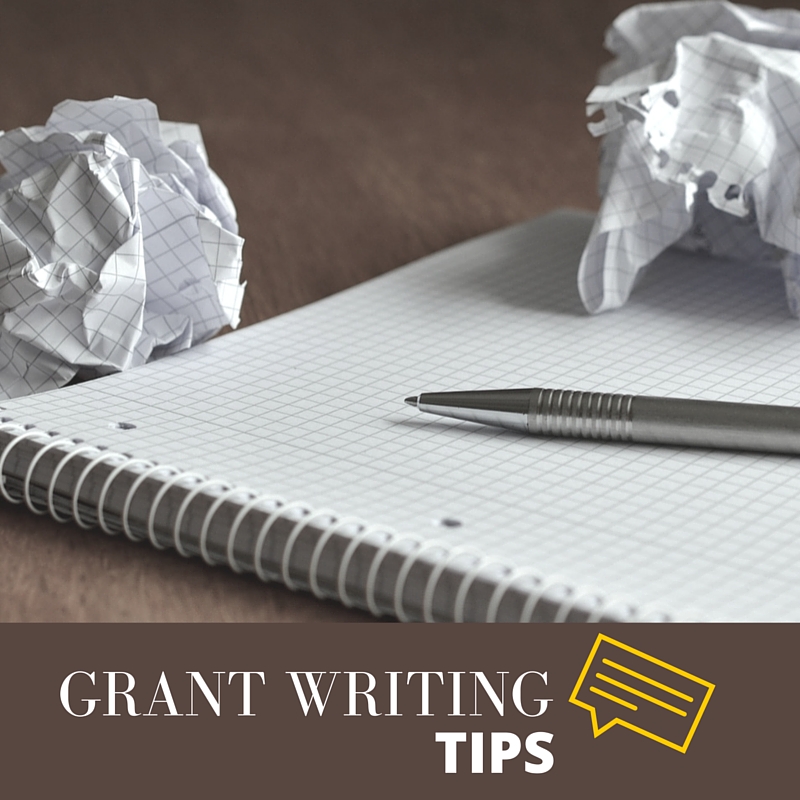
Once upon a time, the NIH had you lead the body of your grant proposal with a section titled “Background and Significance.” Then they messed everything up by taking out the “Background” part, quite confusing many a grant writer as to the meaning of a “significance” without a “background.”
Let’s get that sorted out here.
One perspective on this comes from my book Four Steps to Funding. The four steps are The Why, The Who, The What, and The How. I take the position that you need all four of these to truly engage your readers – especially when you have a combination of both specialists and nonspecialists reading your proposal.
If it were only the specialist in your narrow little field reading your grant, you could forego some of the Why and the What – but that is actually quite rare to have such a specialized readership, despite common misconceptions to the contrary. In almost all cases, you need a very strong “Why,” as in, “why is this work important?” to draw in readers who don’t already have inherent knowledge of why your project is vital.
In grant writing lore of old, the “Why” was addressed by a sometimes long and rambling “literature review” that covered all the salient work that’s ever touched on the topic, to give the reader a “broad perspective” on the field.
That’s nice and all. But it completely ignores the reality of your grant reviewer, who is pressed at all sides for time. The last thing he (or she) usually wants to be doing at this moment is reading your grant proposal to get “yet another in-depth review” of the literature. In fact, more than anything, he just wants to be spending time on his own science, or spending time with family, or one of a myriad other more exciting things than reading your grant proposal to be “educated” on the whole field.

Some of the more experienced (read: senior) grant applicants I’ve worked with use that as a reason to skip the Significance step. They realize that the reviewer doesn’t need a pedantic education about the field, and they realize that reviewer time and attention is a scarce resource, but they implement the wrong solution. The result is often disaster.
I advocate this position that, aside from your Specific Aims, the Significance is the most vital part of your grant proposal. I advocate that if you don’t do this part well, then nothing else you do in your grant is likely to matter. While the Significance may be shorter than its following Approach section, it should never be too short.
The goal of Significance
What is the goal of the Significance section? Your number one goal should be to engage your reader. You need to give her a compelling reason for paying attention. You need to give her a compelling reasons for taking interest in your science or your project and for desiring its success.
It is important to remember the context within which your grant is reviewed. It is not reviewed in isolation, but rather, within the context of a bundle of other proposals being considered at the same time. Hence, it’s not just a matter of reviewers taking interest in your project, but of them taking more interest in your project than the other projects being considered.
For example: If you’ve ever gone to the cereal isle in a US grocery store, there are a plethora of cereals to choose from. Do you buy them all? Probably not. In all likelihood, you buy one or two that you like, leaving the rest to sit on the store shelves.
Grants are a lot like that – your reviewer knows that she can only pick one or maybe two proposals to advocate for – and that’s it. The rest are going to “sit on the shelf.” However, there’s one key difference: unlike cereals, where you may have a favorite that you buy on most trips, each time the grant reviewer reviews, there is a new set of choices presented.
Successful cereal makers use quite a variety of ways in which to capture the interest of the prospective consumer, and you can learn from these. They include: compelling but not gaudy graphics and text, catering to the latest health trends, and matching their message with that of the intended audience. On the latter point, you’ll notice that cereal for kids portrays quite a different image than cereal for adults. Likewise, your potential reviewers aren’t just one big, generic mass of “scientists” – rather, they’re segmented into groups like microbiologists, oncologists, physicists, etc. Different audiences respond to different messages.
Whatever the composition of your reviewers, the very first thing that you have to do, then, is to capture the their interest.
If you boringly blend into the crowd, there’s little chance that you’ll get picked.
In your title, abstract, and Specific Aims you should have already started standing out from the crowd. Now you either make that or break that in the Significance section.
Good science isn’t good enough
There’s a lot of “good” science to fund out there, and not nearly enough funding for it. “Good” science doesn’t stand out from the crowd. If all you’re doing is proposing some “good” science, it’s unlikely to be enough. That’s especially true in days of 10% or less pay lines.
Instead, you must be solving a problem that your reviewer cares about. This isn’t just something generic like “curing HIV/AIDS” or “curing cancer.” Scientists are in science because they like science (obvious, but a lot of people forget this!) They want, not only to solve pressing health problems, but to solve interesting scientific puzzles. The puzzles that your peers are interested in change with the times. You need to make sure that the puzzle you’re solving is one that is currently of interest – or your chances of attracting the necessary excitement by a reviewer is much lower.
Where many fail
Here’s where many “significance” writers fall down: they assume that the reviewer comes to read the proposal already understanding what the problem, question, or challenge is. They assume some sort of magical, in-built knowledge on the part of the reviewer, almost as if there had been a brain transplant from writer to reader. In the name of due diligence, most writers will briefly re-state that problem or challenge in the span of a few sentences – but that’s far too little.
You need to spend the time and space to explain fully why this is an important and compelling problem.
You have to remember that your reader is coming from a very different place than you, and there hasn’t been any brain transplantation going on.
If you haven’t built up the challenge and the problem for your reviewer, so that she has a really strong desire to see it solved right now, then how likely is it that your grant is going to be the 1 in 10 (or less) that get funding? The likelihood is low and growing lower as paylines drop.
Your job in a nutshell, is to build desire
Your job in the Significance, then, is to build desire for your project. It is not there to show how smart or well-read you are. It is not there to add even more details to how you’re going to carry out the project. It is there to give a compelling reason for the question: why does this project deserve scarce funding dollars?
Here are a few pointers that will help you do this:
- The Significance section should not be too short. For a specialist audience, it might be 1.5-2 pages. For an audience that includes non-specialists in your field, it should be longer, i.e. 2-4 pages. The extra space is used to educate your reader about the importance of the problem that you’re working on. If they’re a non-specialist, they won’t already know this, and if you fail to convey this in your significance section, then you’ll fail to generate interest or desire.
- Really good grant proposals are always based on solving a problem that peers in your field care about. Therefore, your Significance section needs to clearly delineate that problem, yet it must do so without getting into a boring lit review.
- Use your Significance section to tell a compelling, yet condensed, story of your project. Have you ever marveled at how a great film director can condense a book into a few hours on film? (e.g. Peter Jackson’s renditions of the Lord of The Rings Trilogy is a great case in point) Your goal is the same. You’ve got a “novel” in your mind about your science, but your reviewer doesn’t have time or patience for a novel (and you don’t have the space) – he only has time for the movie version. You must do the hard job of introducing the key villains and heroes with appropriate vignettes, i.e. mini-stories, and having it all flow together. I teach a “layering” approach in my Grant Foundry seminars that is one way of doing this.
- Ask really good questions and provide great insights. The entire time that someone is reading your proposal, she is judging you based on what she sees written. The best way to convince her that you’re smart and capable is not by showing “how much you know,” but instead by asking great questions and providing great insights. Don’t be stingy with your great ideas. I’ve encountered some folks who are so afraid of the competition that they withhold their best ideas. However, if you’re trying to get your grant to be the one that reviewers pick, you are unlikely to do so by being stingy with your ideas.
- Show why your team is poised and ready to tackle the problem right now. Many grant writers make the mistake of writing the proposal as a generic project that anyone could perform. Can you imagine Lord of The Rings as a “generic story?” Of course not. Nobody funds “generic projects” for “generic teams.” Instead, funders fund specific people to do specific projects that they think they are well-suited for and likely to succeed in. In your significance section, you should show the reviewer why you and your team are the right people for the job.
Writing a really good Significance section is an art form that requires practice and patience. Typically, I’ll spend far more time working on the Significance portion of a proposal than on the Innovation and Approach – even though it is a shorter section.
If you would like more help with the “Art of The Significance,” then stay tuned for an announcement of the next Grant Foundry workshop. (Not on the newsletter list? Then you’ll miss out. You can subscribe by filling in that form to the right).
If you want more clarity on getting funded in today’s environment, I’ve got a free on-demand training that will teach you how to get your reviewers excited and ready to fund your project. Sign up here.

2 replies to "NIH Grant Writing Tips: The Significance of “Significance”"
Inspiring, as always!
Very informative.